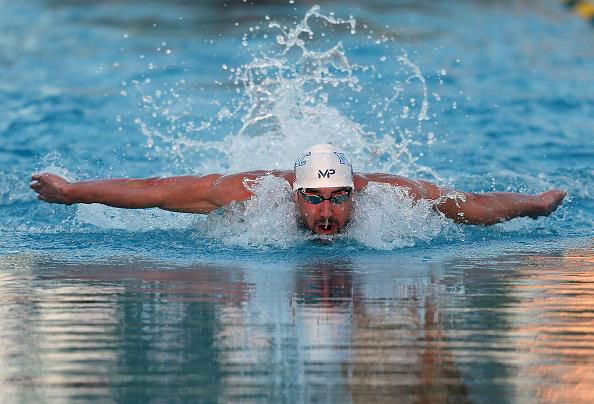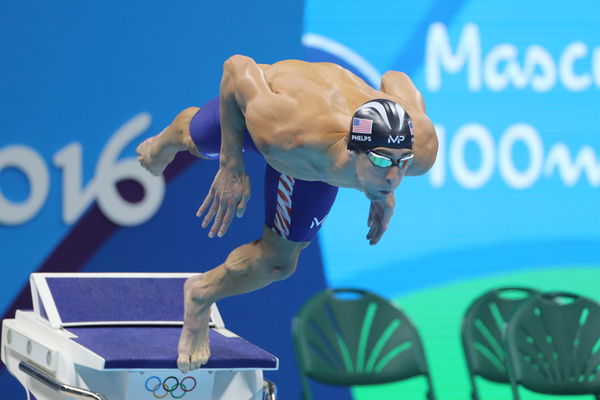
Getty
ROME – JULY 28: Michael Phelps of the United States is dejected after coming second in the Men’s 200m Freestyle Final during the 13th FINA World Championships at the Stadio del Nuoto on July 28, 2009 in Rome, Italy. (Photo by Al Bello/Getty Images)

Getty
ROME – JULY 28: Michael Phelps of the United States is dejected after coming second in the Men’s 200m Freestyle Final during the 13th FINA World Championships at the Stadio del Nuoto on July 28, 2009 in Rome, Italy. (Photo by Al Bello/Getty Images)
Michael Phelps, the swimming legend, and superlatives- greatest, most decorated, and supreme, go hand in hand. Phelps believed in the power of his mind to unleash his potential. It earned him the magnificent title, ?Greatest Olympian of All Time? with a staggering 28 medals.
Watch What’s Trending Now!
Think of Phelps and one can?t stop wondering how he could do it. In fact, during his peak, scientists studied his strokes carefully to understand what made him go on a winning spree.
ADVERTISEMENT
Article continues below this ad
ADVERTISEMENT
Article continues below this ad
Phelps was not only talented and competitive, but also had a great awareness of the other elements the game demanded. He usurped all the critics and naysayers with his spectacular success in 2008. While he shone under the spotlight for the eight-medal count in the 2008 Olympics, his win also presented a challenge to unearth techniques to defeat him.
Scientists revealed that the freestyle method Michael Phelps used was less efficient
Phelps became a subject of interest for his consistent wins. There are two different freestyle strokes, namely ?deep catch? and ?scull.? In a research conducted in 2012, scientific experts closely examined the difference between the two strokes and recorded their observations.
The two approaches differ in the movement of the hand. The deep catch deploys putting his or her arm forward, whereas the scull involves reaching out and then bending their elbow to propel forward.
ADVERTISEMENT
Article continues below this ad

It is usually the choice of the swimmer to pick whichever suits them the best. Although the answer to the question of which one is better is complicated, the study reveals that deep catch is better than the scull. Phelps figured out that the scull approach worked in his favor after experimenting with the deep catch in a few races.
According to former Olympian Gary Hall Sr, drag is the most important part of speed. He said, ?The speed we can generate is directly proportionate to the power that we generate, but it?s inversely proportionate to the frontal drag that we create during our swimming.?
It all boiled down to preparation
Phelps envisioned ?to do something that the sport had never seen, that people had never seen, the globe had never seen.” He believed he had control over what he did and how he prepared. It started with as simple as ?getting up behind the block and just racing.?

Getty
Swimming – Olympics: Day 7 Michael Phelps of the United States dives in at the start of the Men’s 100m Butterfly Final during the swimming competition at the Olympic Aquatics Stadium August 12, 2016 in Rio de Janeiro, Brazil. (Photo by Tim Clayton/Corbis via Getty Images)
Also, Phelps tried to understand everything about the race??how the race should go, how I don?t want the race to go.? And emphasized the significance of preparation that if one is not well-prepared before the meet, ?you?re not gonna get the time you deserve.?
WATCH THIS STORY:?From Simone Biles to Michael Phelps US Olympians Who Paid Hefty Tax on Their Gold Medals
Have you tried out these techniques in the pool?
ADVERTISEMENT
ADVERTISEMENT
ADVERTISEMENT
ADVERTISEMENT

